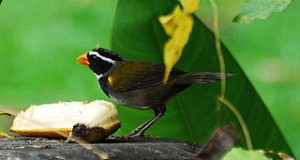As in most animals, male zebra finches utilize the hormone testosterone to help develop secondary sexual characteristics, such as their bright red bills. However, this comes at a cost, as testosterone has also been shown to weaken the immune system.
Carotenoids – compounds that impart yellow and orange colors to carrots and other foods – also help male finches to maintain their bright colors and, as a consequence, to attract females. The finches obtain carotenoids from their diet.
Recently, researchers at Arizona State University have shown that, in addition to imparting color, carotenoids also combat the negative influences of testosterone in zebra finches. Males deficient in carotenoids suffer depressed immune systems, while those with a sufficient intake benefit from testosterone by becoming more attractive to female finches.
This information reinforces the importance of a providing our birds with a well-balanced diet, and may have implications for human health as well. I suggest feeding your zebra finches a variety of nutritious foods, including such important basics as Goldenfeast Australian Blend Bird Food / Tropic Fruit Pudding and ZuPreem Fruit Blend, to assure a sufficient intake of carotenoids and other nutrients.
Interesting research concerning the effect of diet on zebra finch reproduction is posted at:
http://www.pubmedcentral.nih.gov/picrender.fcgi?artid=1810080&blobtype=pdf
 That Bird Blog – Bird Care and History for Pet Birds
That Bird Blog – Bird Care and History for Pet Birds



